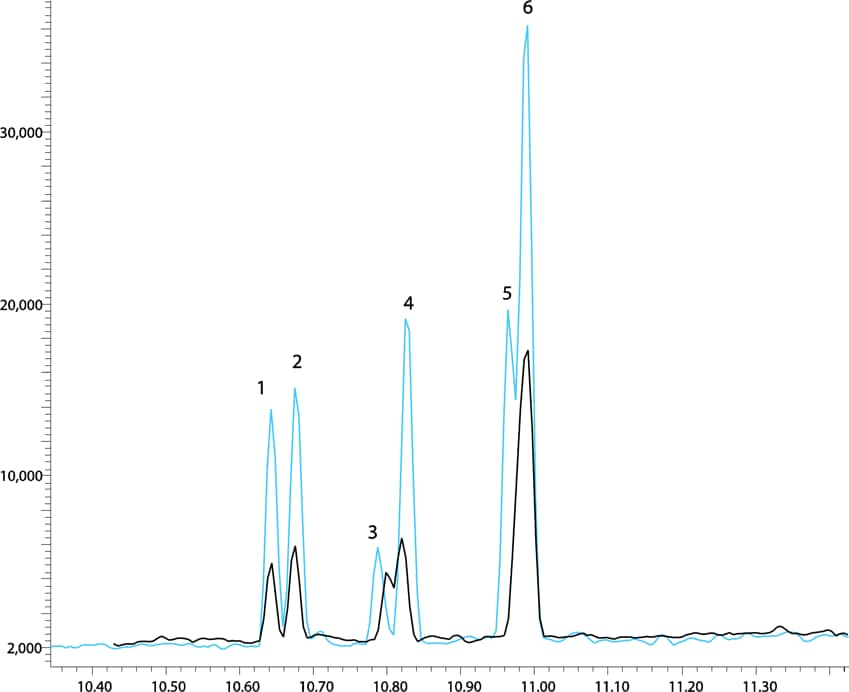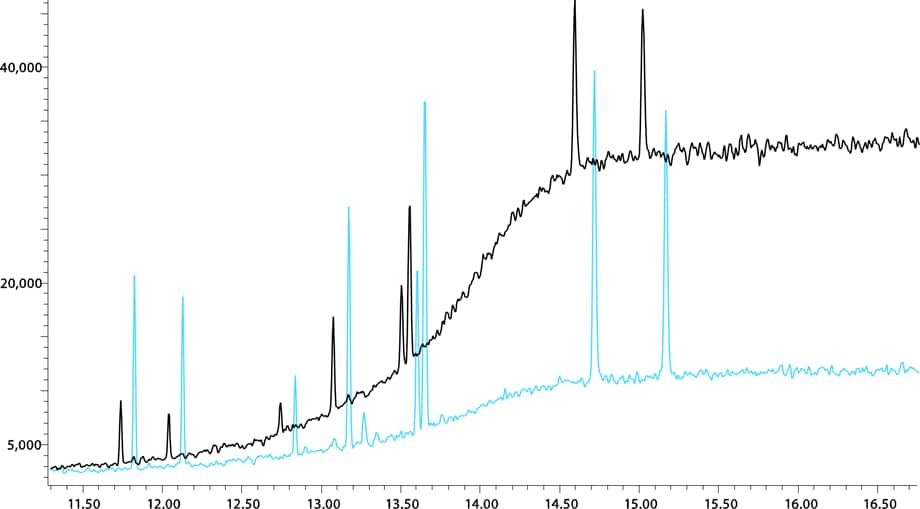Access Agilent eNewsletter, October 2014
>> Update My Profile | Subscribe to Access Agilent | Article Directory

Achieve stronger signals, sharper peaks, and better resolution with Agilent J&W GC columns
By Gary Lee
Agilent Product Marketing Manager, GC columns
A gas chromatography (GC) column that slows down your lab’s productivity with questionable results and time-consuming rework is not good value, regardless of price. Repeating or verifying questionable analyses wastes resources, hinders productivity, and hurts your bottom line. To reduce your need for rework, every Agilent J&W Ultra Inert GC column is rigorously tested to ensure exceptionally low bleed and consistently high inertness. This testing protocol optimizes delivery of active analytes to the GC or mass spectrometry (MS) detector.
In this article, we explain how you can avoid suspect results and rework by using Agilent J&W GC columns to achieve stronger signals, sharper peaks, better resolution, and less bleed. This is the first in a four-part series that will show you how to get the best results possible in all of your GC lab work. Look for part 2 in November’s Access Agilent newsletter.
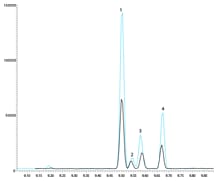 Enlarge
Enlarge
Figure 1. The Agilent J&W GC column (blue trace) delivers bigger signals and sharper peaks for acidic phenols than the Restek Rxi-5Sil MS column (black trace).
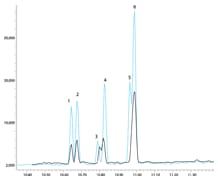 Enlarge
Enlarge
Figure 2. The Agilent J&W DB-UI 8270D GC column provides better signal and resolution (blue trace) for challenging pesticides when compared to a Restek Rxi-5Sil MS column (black trace).
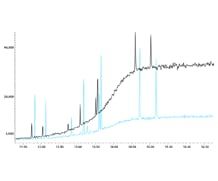 Enlarge
Enlarge
Figure 3. Better signals and lower column bleed at elevated temperatures from an Agilent J&W GC column (blue trace) when compared to a Restek Rxi-5Sil MS column (black trace).
Big responses and sharp peaks for more accurate results
In Figure 1 we see an overlay of total ion chromatograms that compare results using both an Agilent J&W GC column and a Restek Rxi-5Sil MS column. The Agilent trace displays significantly greater signal strength and sharper peaks for acidic phenols.
Enhanced signals and better resolution in pesticide analysis
Even for analysis of the most challenging pesticides, Agilent J&W Ultra Inert GC columns deliver enhanced signals and better resolution. Figure 2 shows how the Agilent J&W DB-UI 8270D GC column successfully resolves pentachlorophenol from terbufos. In addition, DB-UI 8270D delivers better peak resolution between chlorothalonil and phenanthrene-d10. Triazine herbicides, simazine, and atrazine also give stronger signals and sharper peaks with this column.
Less column bleed and better signals – even at elevated temperatures
The results are in. Agilent J&W GC columns produce higher analyte signals for late-eluting compounds, too, with lower bleed at temperatures up to 320 °C (Figure 3).
Agilent delivers solutions for all your GC needs
We’ve shown how you can avoid rework by using Agilent J&W GC columns that deliver stronger signals, sharper peaks, better resolution, and less bleed. In the second part of this series, we will explore how to increase confidence in your lab results when analyzing very active compounds. For now, why not take a few moments to learn how Agilent J&W Ultra Inert GC columns and Inert Flow Path solutions can help you meet ever-increasing demands for reduced detection limits. "See you" next month.
>> Update My Profile | Subscribe to Access Agilent | Article Directory
Figure 1.
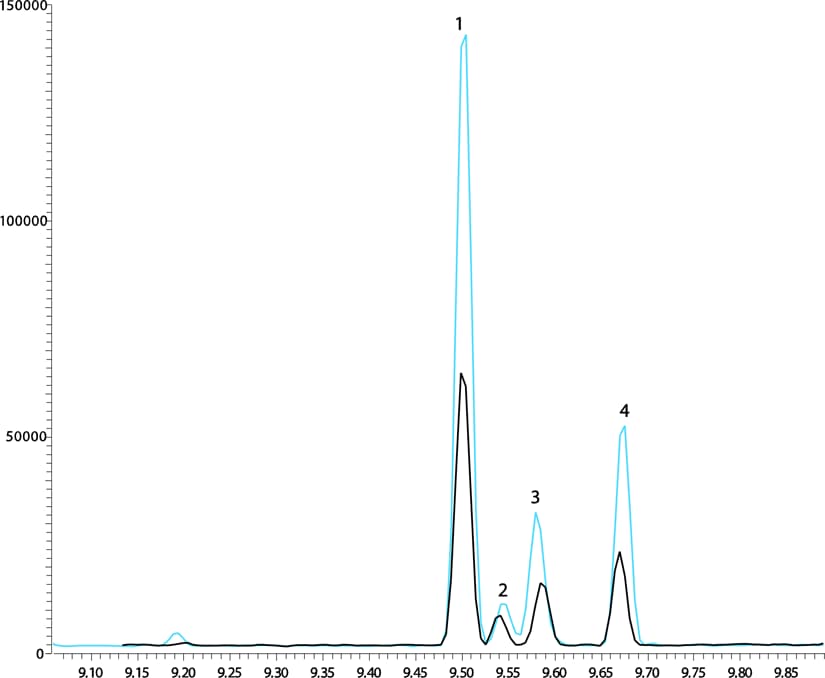
Peak ID
- Acenaphthene-d10
- 2,4-Dinitrophenol
- 4-Nitrophenol
- 2,4-Dinitrotoluene
The Agilent J&W GC column (blue trace) delivers bigger signals and sharper peaks for acidic phenols than the Restek Rxi-5Sil MS column (black trace).
